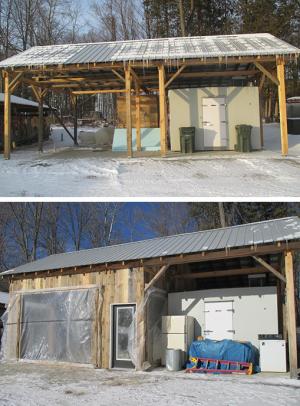For most farmers, winter means planning. Shelburne Farms is no exception. But as an education organization, there's extra planning around sharing our gardens with students. We — the garden crew — meet with the education staff to plan out the education garden, located up the hill behind the Farm Barn. (This garden is used only for education, unlike the Market Garden, which is used for production and education.) We also get updates on camps at the Market Garden. We meet with the Children's Farmyard staff to figure out what their garden will look like, too.
Chef David Hugo and I will iron out our production plan for supplying the Inn and Farm Cart with a variety of great organic produce throughout the growing season. Then we will actually start planning out where crops will actually be planted and how much to plant. Finally, we'll soon place our annual seed order, including dependable old seed varieties and some experimental ones, too.
In between all the planning, we squeeze in a few workshops to keep our minds filled with new ideas and catch up with other farmers. My co-worker Lynn Wolf and I recently got back from the Vermont Vegetable and Berry Growers Association annual meeting at Lake Morey Resort in Fairlee, VT. (We snuck in a skate on the lake.)
Winter this year has also meant carpentry projects. In the past few weeks, thanks to generous donor support, we've turned our simple wash shed into a year-round work space, and rehabilitated the greenhouse.
The post-and-beam wash shed, which was open to every passing breeze, now has insulated walls and overhead doors for large equipment (It has a door for people, too). It's a good year-round place for vegetable washing and special projects … and who knows what future uses.
As for the greenhouse, which dated back to the early 1980s, years of interior humidity and exposure to the elements had seriously rotted its wooden frame. After demolishing the end wall, we rebuilt it using rot-resistant metal framing and longer-lasting polycarbonate for the walls. This will also let in better light for the plants.
All this planning and improvement has me excited to get back tilling the soil, growing great food, and welcoming campers and visitors to learn in the garden. Spring is coming!

